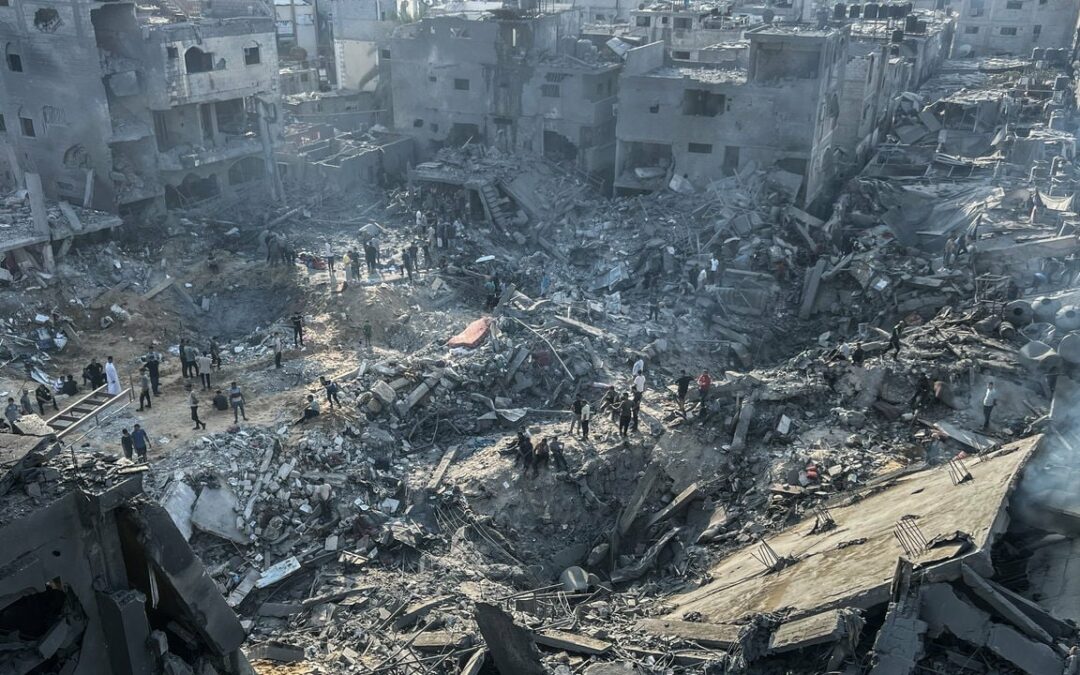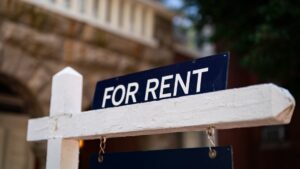More than two thirds of the enclave’s population are registered refugees
Your browser does not support this video.
Video: Getty Images
On November 1st the Israel Defence Forces (IDF) struck Jabalia, a refugee camp in northern Gaza, for the second time in two days. Hamas, the militant group that runs the enclave, claimed that 195 people were killed. The IDF said the camp—the birthplace of the first Palestinian intifada or “uprising” in 1987—was a Hamas “stronghold”. It was targeting the group’s extensive subterranean system and claimed that two Hamas commanders were killed. Much of the damage to buildings, the IDF said, was caused by tunnels beneath the camp collapsing.
The impact on civilians was devastating. Footage shows residents searching for bodies in the rubble after the attacks. Unlike many refugee camps in the rest of the world, Jabalia is not a tent city: like others in Gaza, it is made up of cement-block houses, most built by refugees. Many of the people living in the strip’s eight camps are third- or fourth-generation residents. Why are refugee camps so prominent in Gaza’s troubles?
Damage to Jabalia refugee camp caused by an Israeli strike
Image: Maxar
UNRWA provided schooling and health care for residents, while Egypt, which had won control of the territory in a war with Israel, administered and policed the camps. The agency hired employees from among the refugees and others found work outside the camps. When it became clear that the displacement would be long-term, residents began to build more permanent settlements—first shelters made of mud bricks, then cement-block houses. In 1955 UNRWA re-organised the camps, laying out streets on a grid.

Sources: OCHA; European Commission; OpenStreetMap
In the six-day war in 1967, Egypt lost Gaza to Israel. In the decades that followed the camps continued to grow. Unlike many refugees in other parts of the world, residents face no restrictions on their movement within Gaza and are free to seek employment. (The same is true of Palestinians who fled to Arab countries and the West Bank. Refugees in the two enclaves, like most residents, are stateless.) For unemployed or elderly people living elsewhere in the enclave, moving to a camp, where education and sanitation are free, became a fairly attractive prospect. Some refugees moved from outlying camps to those closer to cities to improve their chances of finding work. The camps received some of the same municipal services—including electricity and plumbing—as other parts of the strip. But they were not included in urban development plans, adding to the problems of overcrowding and poor infrastructure.
The camps’ growth was unregulated; many buildings are unsanitary and structurally unsound. Several are now among the most densely populated areas in the world. Some 116,000 people are registered at Jabalia camp, which covers an area of 1.4 square kilometres. UNRWA introduced an infrastructure-improvement programme in 2010, which included plans, funded by Saudi Arabia, to build 752 homes in Rafah, a camp in the eponymous governorate in the south, to replace some of those destroyed by Israel during the second intifada of 2000-05. But that has not been nearly enough: many homes in Gaza’s camps were in poor condition even before the war began and some use unsafe building materials such as asbestos. Residents add extra floors to accommodate new family members, resulting in haphazard structures on tight narrow alleyways.

One of the camp’s five school buildings
Al-Maghazi refugee camp
Image: Planet
Israel’s blockade of Gaza, which followed Hamas’s taking power in 2007, worsened conditions in the camps. Most residents are poor and the unemployment rate is around 48%, a little higher than the average for the strip. Their ability to move outside of the enclave—like that of any Gazan—is curtailed by Israel. That makes refugees in Gaza considerably worse off than the descendants of those who fled in 1948 to Jordan, for instance. There they are fully integrated and most have Jordanian citizenship.
The wars that have rocked Gaza over the past two decades have brought more distress to those living in camps. UNRWA says it may have to shut down operations if fuel does not reach the strip. A humanitarian catastrophe is just one of many worries. Israel says Hamas fighters who operate from Gaza’s refugee camps are using civilians as “human shields”. In 2006 residents of Jabalia were encouraged to gather around the house of Muhammad Baroud, a Hamas leader living in the camp, to deter an Israeli strike; those efforts succeeded. By fighting in or under the camp, Hamas militants are inevitably putting many civilians in danger.
During the war in Gaza in 2014 Israeli strikes left 77,000 registered refugees homeless. In previous conflicts, residents have sought shelter in UNRWA schools. But even those are not safe: in 2014 UNRWA reported damage to 118 of its facilities inside refugee camps. The UN says almost 700,000 people are currently sheltering in 149 of its facilities, and that 44 of its buildings have been damaged by Israeli strikes since October 7th. Many residents fear that they have nowhere left to hide. ■









